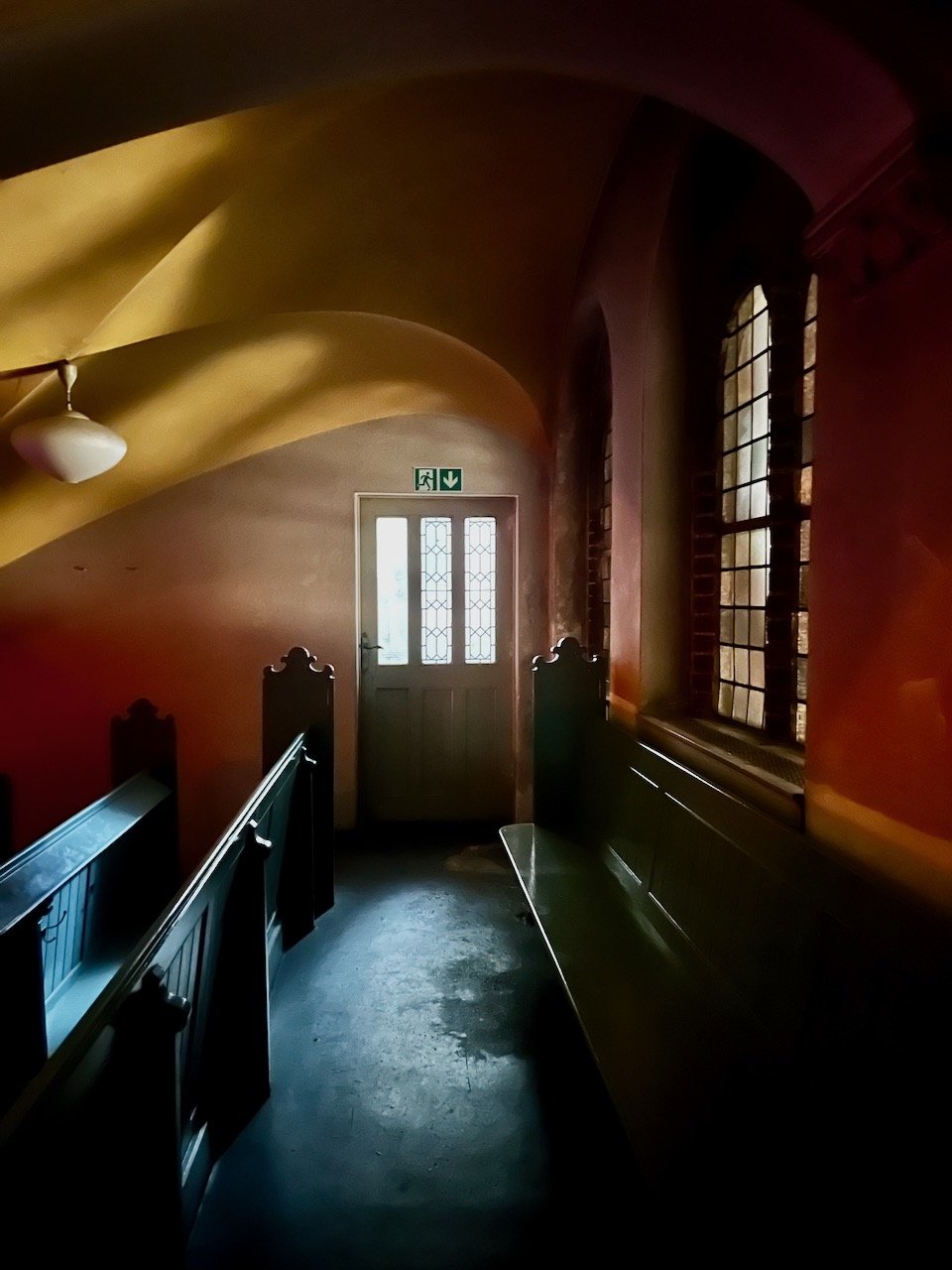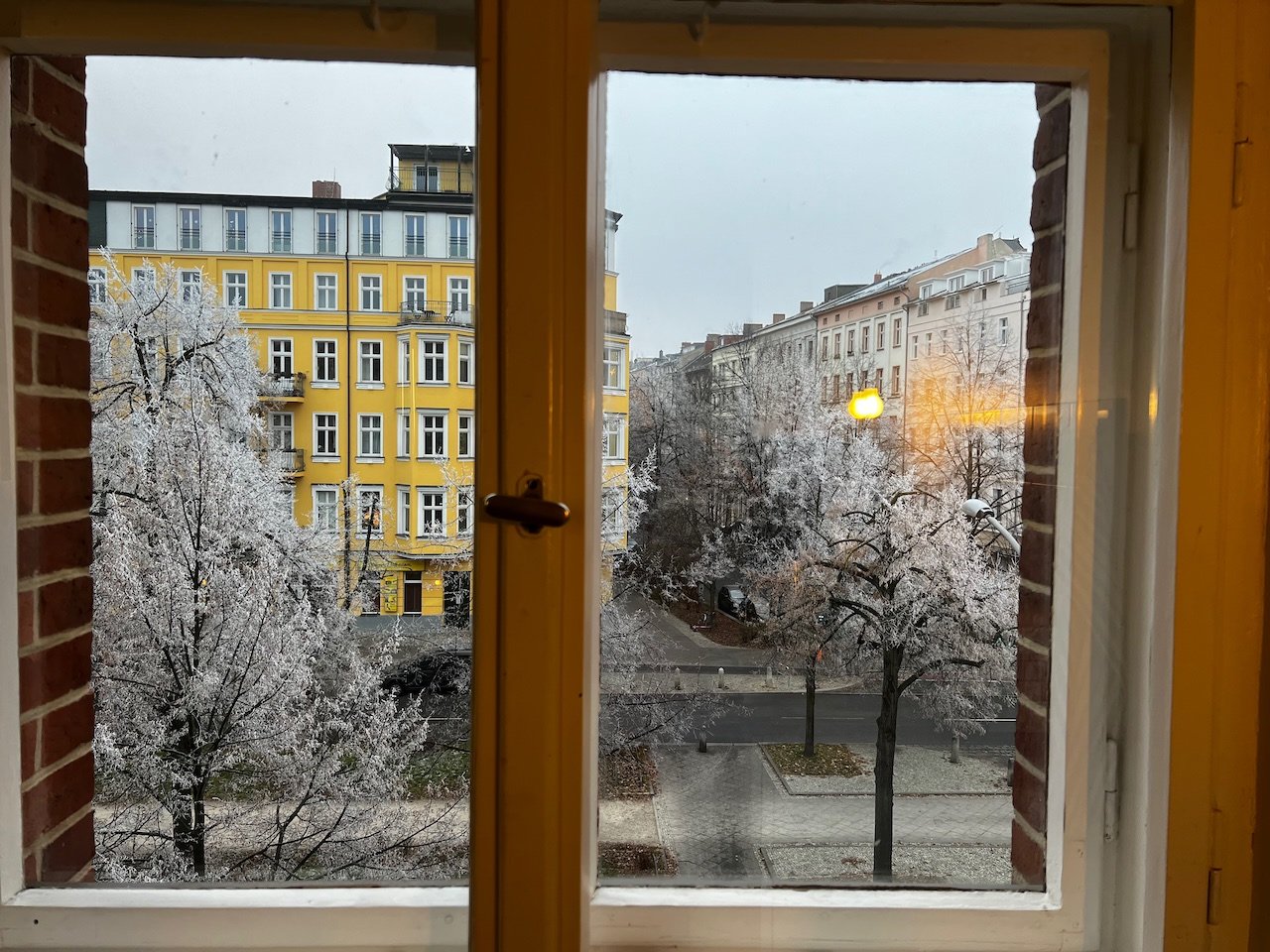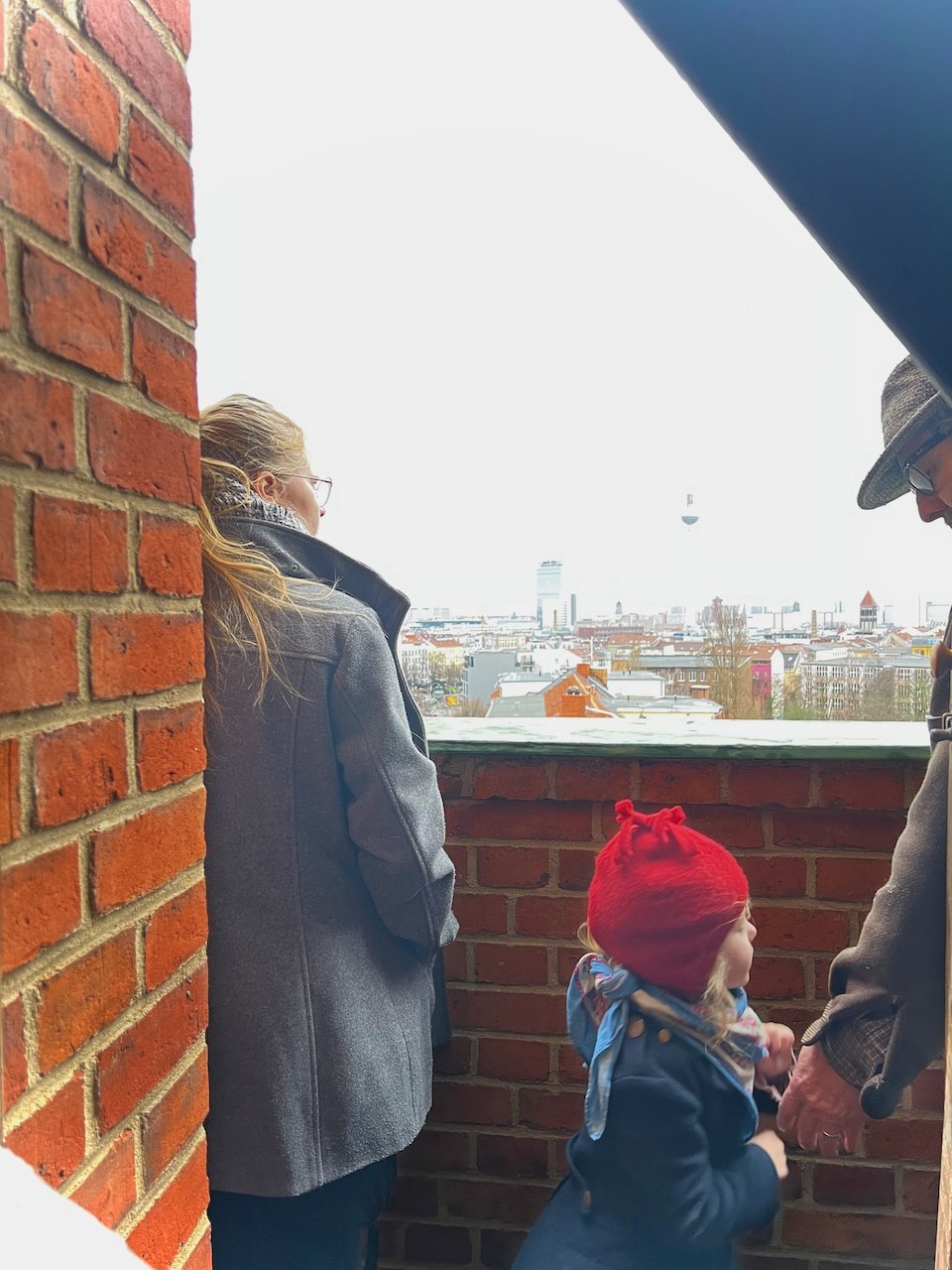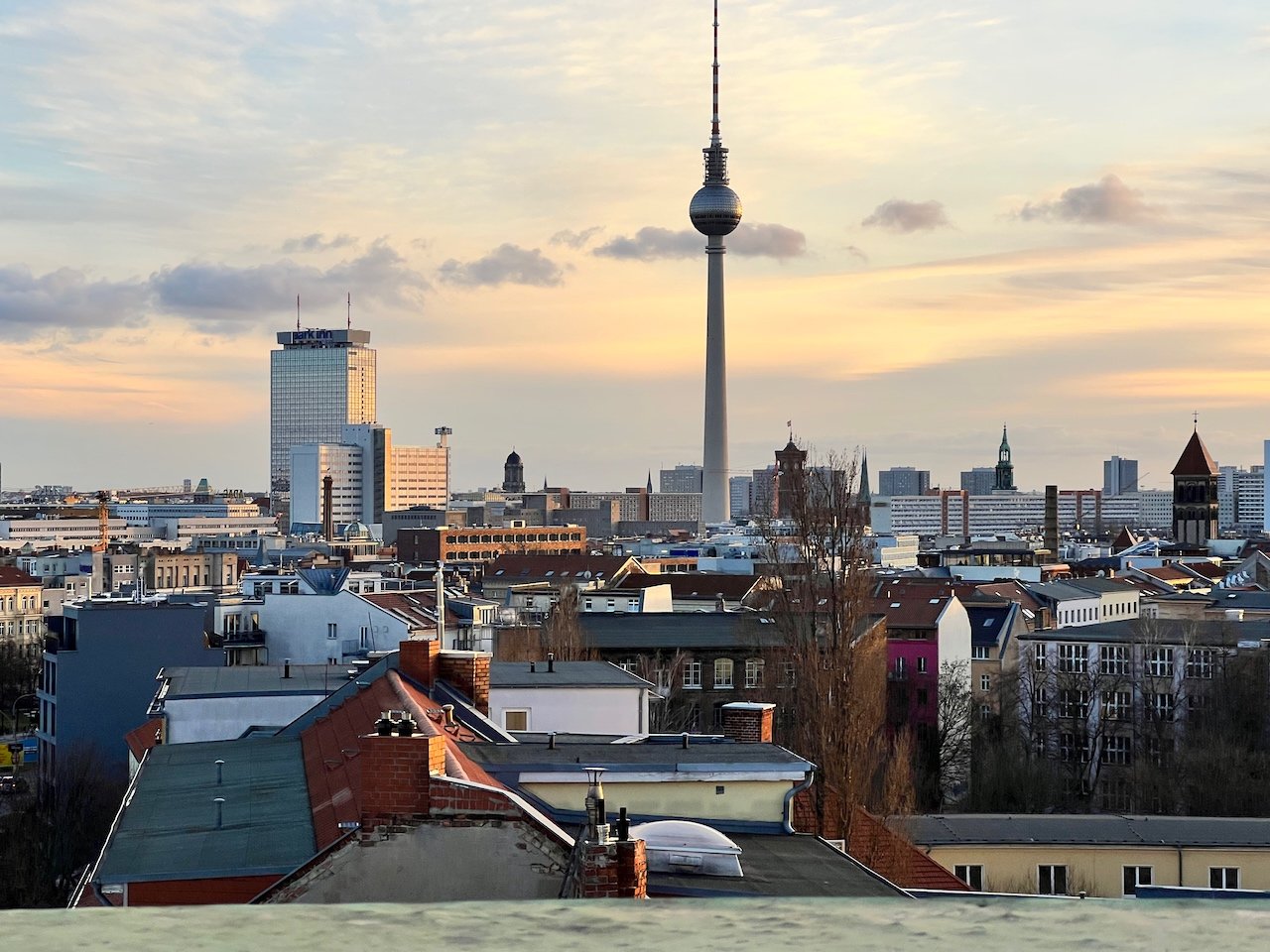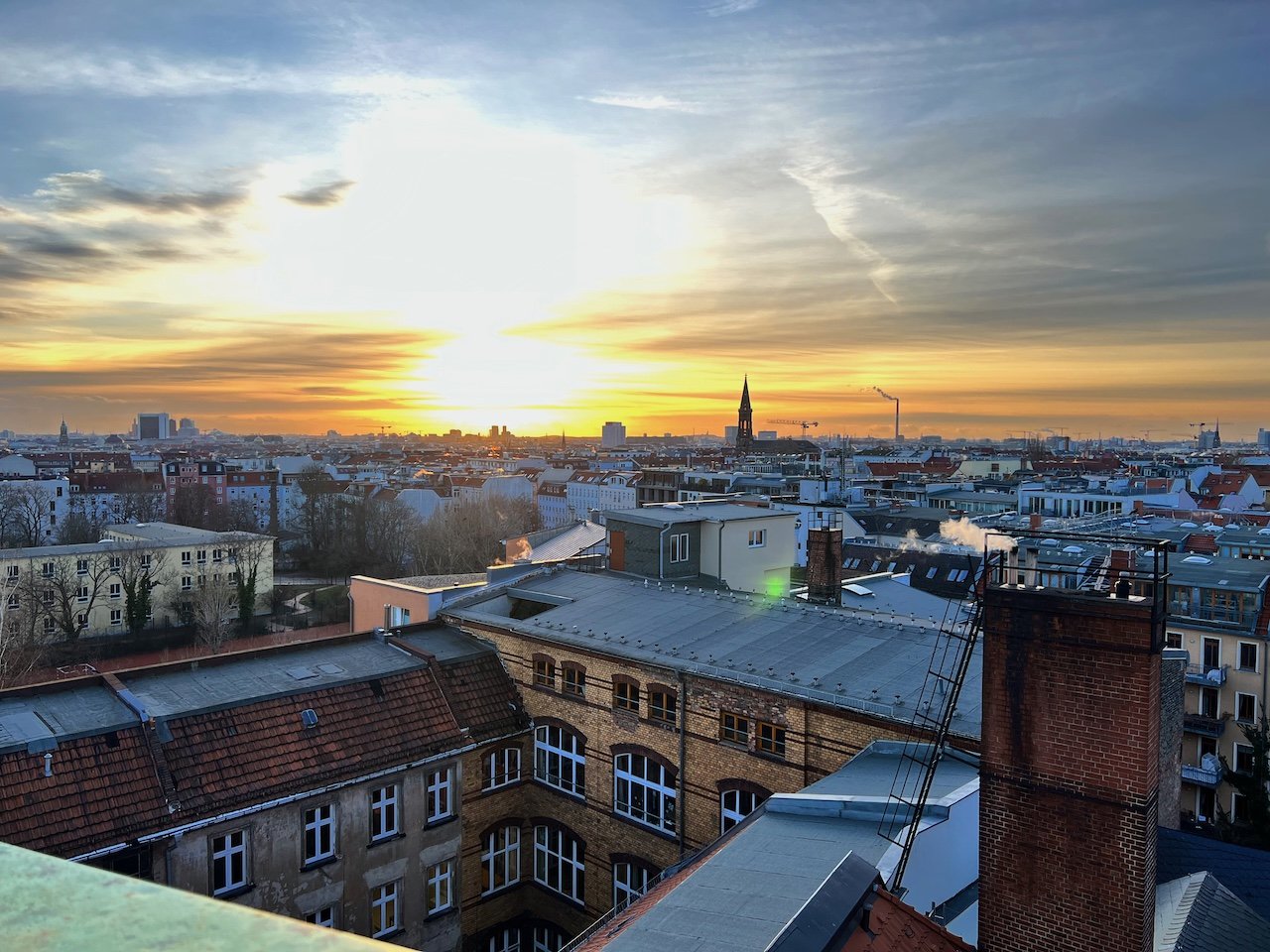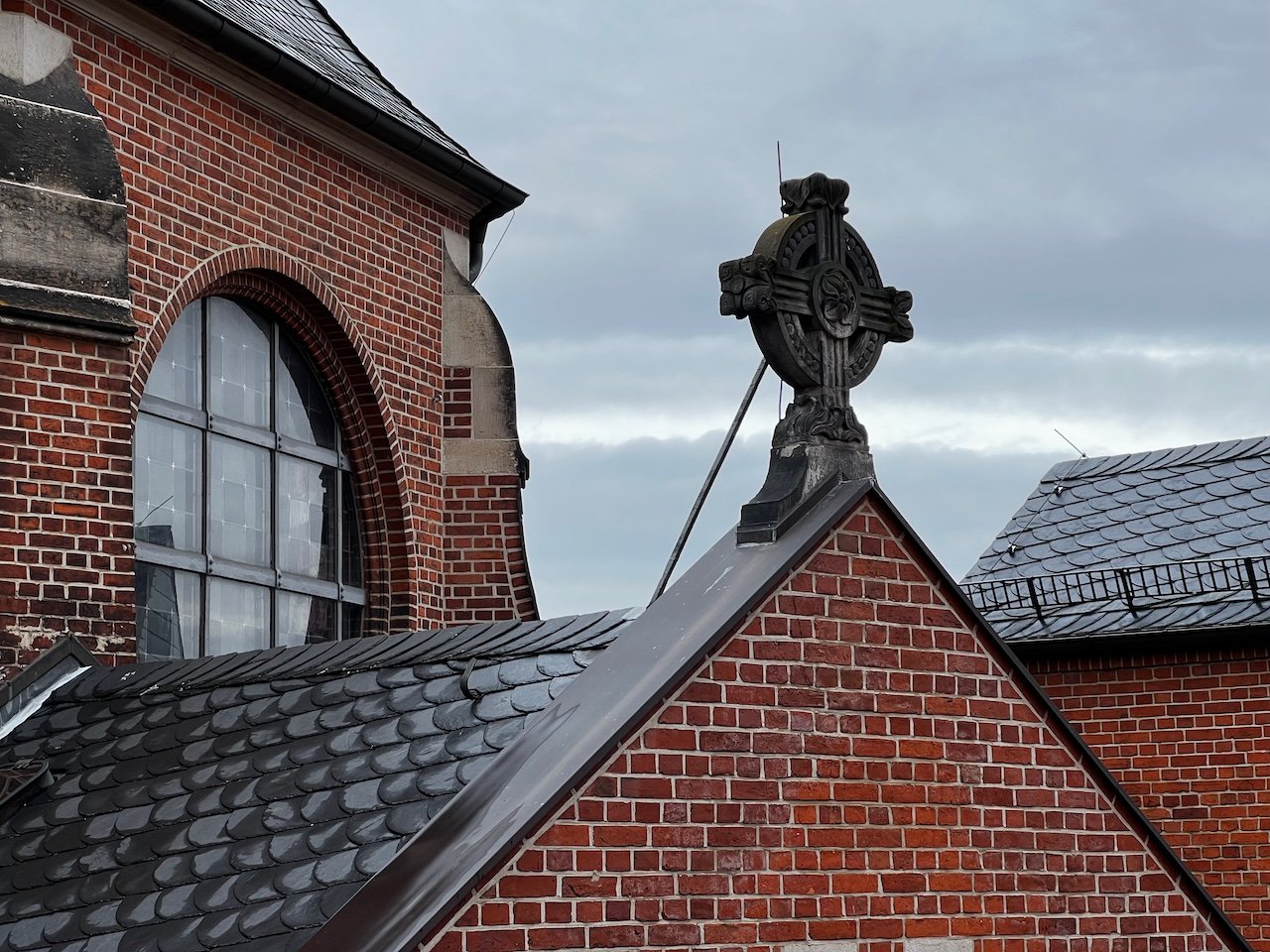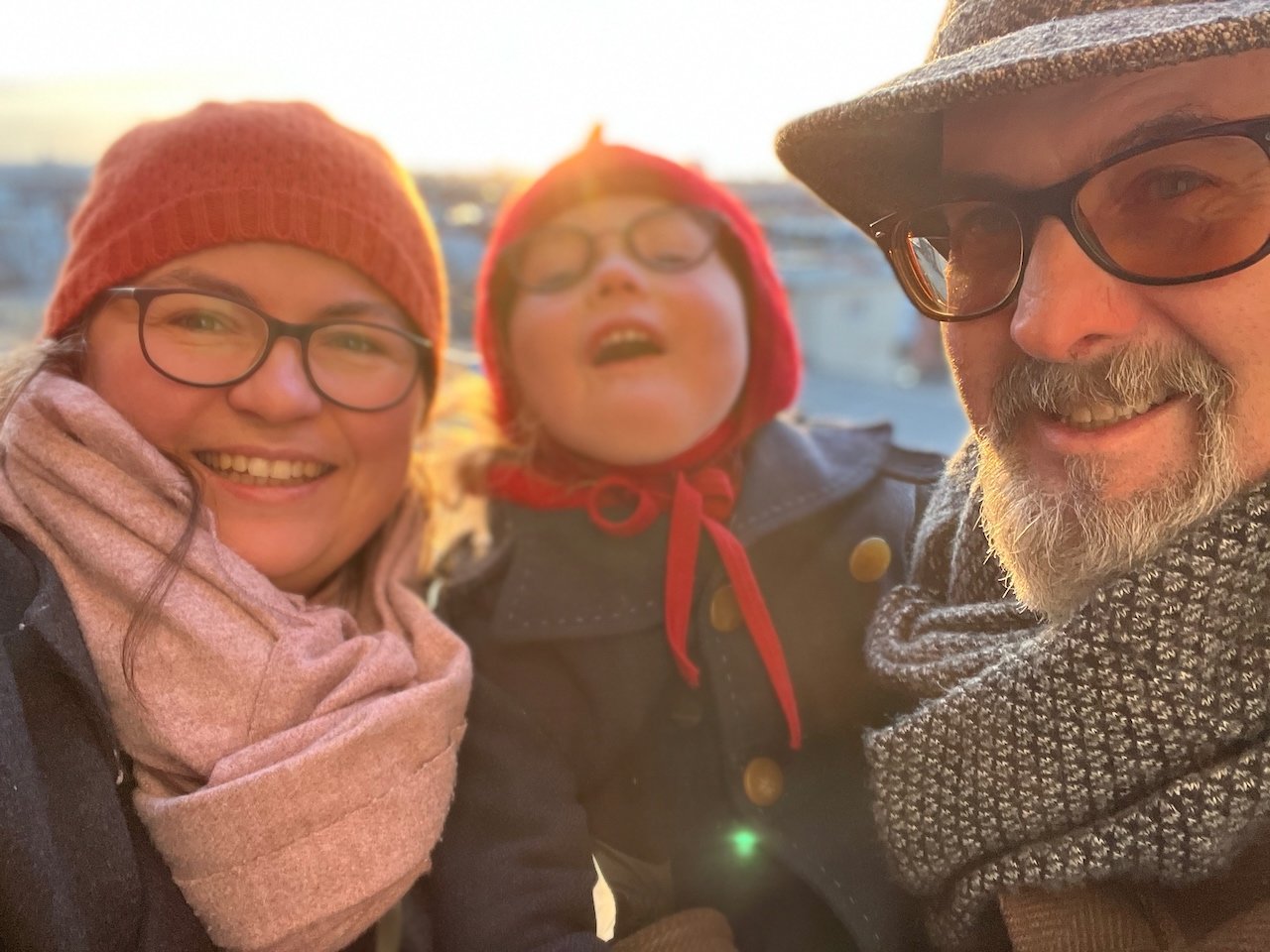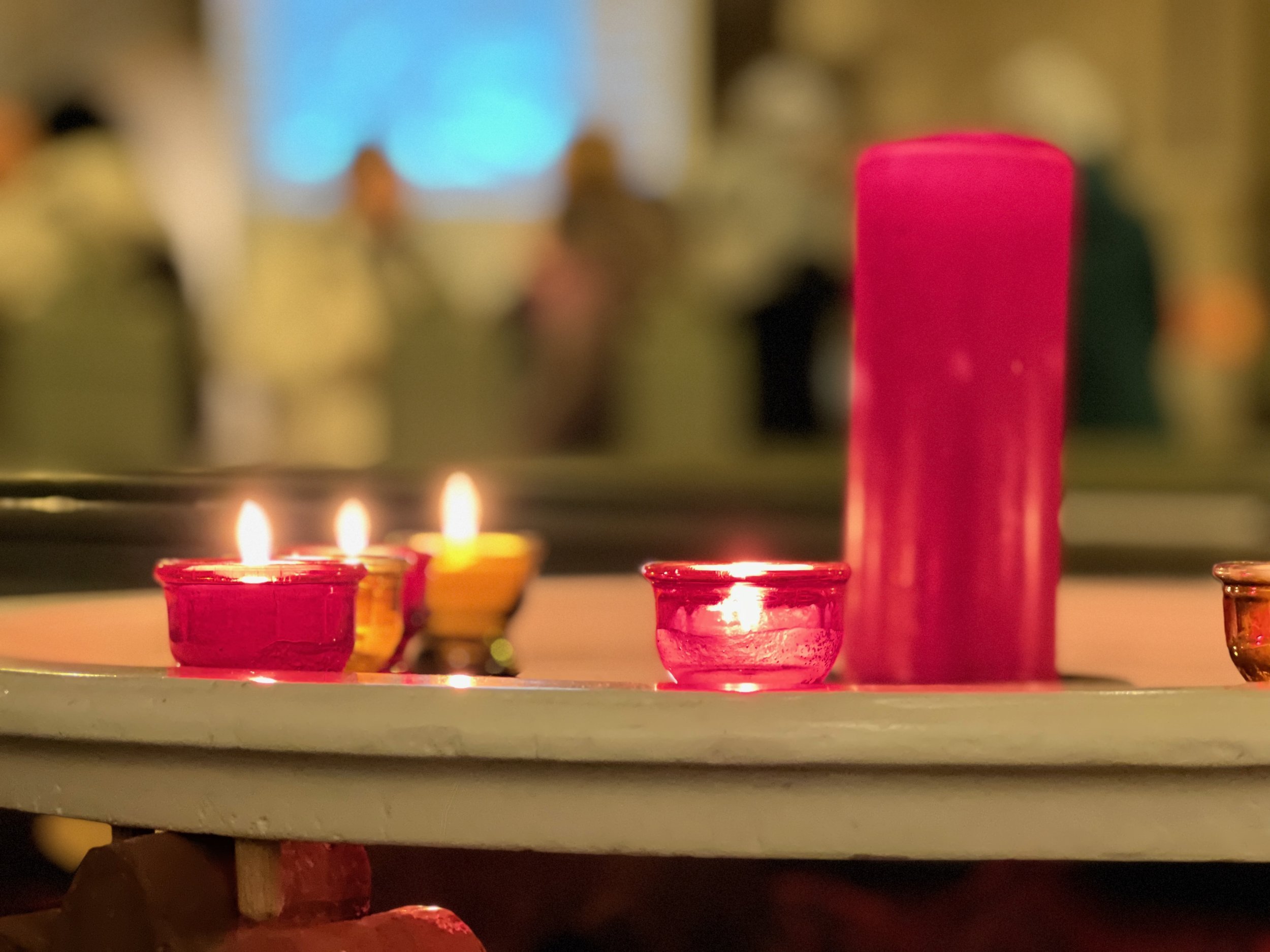Pilgrimage Blues. Empty church balcony at City Cloister, an intentional community at the heart of Berlin. — Photo: A. Furchert
Dear fellow pilgrim,
This morning a small layer of snow woke us here in Berlin, not enough to cover all the grey. But enough to build a very small snow man in the monastery garden. Today I offer you some “fragments” from our sabbatical pilgrimage - thanks to Chuck who reminded me of this venerable philosophical tradition.
But first I want to give thanks to each of you reading and bearing with us, for sharing our writings and program and for being with us on the way. I am particularly grateful to all who write with comments and share connections to your own thinking. It might take some time but I try to answer every one personally.
Chris for instance shared the association to the “ministry of bearing” as Bonhoeffer laid it out in his Life Together. I have been so grateful for this connection. As it offers some consolation and a framework to write about the existential stuff of our human pilgrimage.
So bear with me as I work myself through these pilgrimage fragments. I hope they might offer someone words for your own experience. It all culminates in #4 and #5 where the pilgrimage blues sits down with RICHARD ROHR and SØREN KIERKEGAARD at the kitchen table pondering the deepening of self (while Chuck pours the wine ).
You can also just meditate on the images and their brief descriptions. As always a blessing awaits you at the end of the reflection (#7) followed by some news and updates and some pieces from the archive.
With love, Almut
1:
Our experiment of living and working with a monastic community has, somehow, almost come to a halt. After what felt like the 50,568th cold (our toddler’s counting), I just was done with Berlin. With the grey, noisy streets, the rushing crowds, short days, and the constant stagnant cloud cover. With the commitments we have had to cancel because we were again sick. With days gone by waiting for some relief from the fog in our heads. With family visits canceled or curtailed. And also with the ambivalent feeling that comes with being once again immersed in my mother tongue and homeland.
Monastic life is often not romantic. It is based on commitment and resilience and stability. And our resilience was waning, melting away like the thin snowy mush in the streets of Berlin.
And while our monastic community picked up the slack, brought lunch to our door, contacted doctors for us, and gave us their home remedies, we had to work hard simply to be grateful.
Monastic living is much like other living – we each still bring our complicated and cranky selves with us when we enter.
Dialectics of every day living: up and down. — Photo: A. Furchert
2:
Did I tell you that we live above the church? Literally? When you walk through the door on the upper balcony pictured in the first image you would be right at our apartment door.
This has made for great concert visits during Advent and Christmas. We can sneak in from behind or also open the doors and listen. We now call the benches up here our quarantine or parenting bench, we can hear daily prayers while sick or on baby sitting duty.
Living at church comes with its own challenge: Do I really want to be so close again to church life like in my pastor-kid days? Am I still even identifying with an institution like this? And do these words still speak to me? And what do you do with the (real and metaphorical) baggage which lays compartmentalized somewhere at your homeland waiting for you to come home to?
Light reflected on dark walls in our home at the city cloister. — Photo: A. Furchert
3:
Have you ever had the pilgrimage blues? When the days of new beginnings are over, the feet start hurting and the back aches? When the fog descends and you have lost sight of your destination?
Some wise people tell us that is when the pilgrimage truly begins. And that it might be a long dance ahead.
Others sell us prepackaged journeys with well defined goals. They are usually more expensive but also shorter. Because the arrival time needs to be before one gets too weary of the whole thing.
People flock to famous teachers who sell wisdom like seven-step programs. But when it comes to existence, the learning becomes harder and the path becomes steeper.
“One needs to dig deep in order to build up…”, quips Kierkegaard.
No prepackaged answer will do. What is needed is that the answer arises in the heart of the pilgrim. Just as good blues arises in the heart of the singer.
Sunday early morning view on empty streets. City Cloister Berlin. — photo: A. Furchert.
4:
And so while leaning into the pilgrimage blues I came across Richard Rohr’s writing on the true self:
With “Immortal Diamond,” a phrase he took from the Jesuit teacher Gerard Manley Hopkins he refers to our immortal self, “the real you that has been there all along, hidden under the trappings of ego and False Self. ”, Rohr says (listen here). And, he probably would agree, that our pilgrimage, especially the weary parts, are when we shed the layers of ego.
“Life is not a matter of creating a special name for ourselves, but of uncovering the name we have always had. We need ego to help us function, succeed, and belong. But if we let it stay in charge, ego stands in the way of living freely and authentically, from our God-given identity and calling.”
So what then is the true self? According to Rohr it is “who you objectively are in God,” not “the manufactured self” but more the essence of all, “the soul” (listen here).
5:
Don’t you think sitting RICHARD ROHR and SØREN KIERKEGAARD at a table would make for an interesting conversation?
And so while pouring them wine we ask them if they in fact have the same understanding of the deeper self, perhaps just using different images?
To become a “self before God” is the Kierkegaardian phrase and it sums up the Dane’s life’s work. Every text, philosophical or spiritual, was experimenting with that journey, reminding the reader of the forgotten self, the one we become when we contemplate our human lot and hold it into Divine light.
But is arriving at the soul arriving at the “true self,” as Richard Rohr has it? And is it the deeper self Kierkegaard has in mind? It almost sounds, like the “true self” in the “immortal diamond” image is some thing we can find when we we are finally done pealing all the layers of ego away which were hiding it. Then our “true self” appears like a shiny diamond at the bottom of our core being, just waiting to be discovered by us.
Kierkegaard sips some wine and nods lightly. But, he whispers, there is no way to escape the “manufactured self.” Because, even arriving at the insight that we are immortal in the eyes of God, truly seen, a child of God, some one needs to relate to that very insight. Someone who becomes aware of her own manufacturing and thus her freedom to choose to relate to herself differently, to retell her story in a new light, and in doing so to become the self before God. We cannot overcome our ego, we can just transform it. That is the task of the self. That is the self.
So we deepen our self by walking. By realizing the manufactured parts and our degrees of freedom to let go of them. Both, Kierkegaard and Rohr agree that there is some “dying away” to do in this deepening process. Which brings me back to the pilgrimage blues.
View into the bell tower at city cloister Berlin. — Photo: A. Furchert
From the beginnings of time towers hold archetypal meaning: from descending into our deeper conscious to ascending to the realm of Divine enlightenment.
6:
“Falling upward,” Richard titles one of his books. And so we took him literally.
We packed our pilgrimage blues and our toddler and got up. All the way up on our church tower which in fact we can do without even leaving the house :-)
Towers have been since mankind symbolic places. We descend into deepening and ascend to be enlightened. And enlightened we truly were. Standing on the mountain top or a tower lets you see your surroundings in a new perspective. As you become smaller your sorrows loose their sting. It does not mean to belittle your sorrows nor to forget about them. It means to escape despair by stepping into freedom. Looking over the rooftops does help. It offers perspective and consolation.
There are some towers you want to avoid, like the ivory tower of the isolated philosopher, or the watch towers that used to split Berlin in half. But towers also elevate our view and remind us of the bigger picture.
So here is our blessing from the roof tops of Berlin:
7:
A blessing for the weary pilgrim
You do not need to know
the ending
not even the beginning
you do not need to walk it all at once
a regular pause might be required
to gain the courage
for the next step.
You do not need to carry
the pain of the whole world
your own cross will suffice.
What you truly need
is faith
not may be
the faith from your childhood days
in a God who will fix it
but the faith
of the weary pilgrim
complicated and worn,
but still:
there is hope
and always a next step
on our falling upward.
So pause
and then walk
and then again.
Amen.
Prayer candles.
Let us light a candle for you here at the city cloister of Berlin. Just write us with your request.
This week we lit candles for the people suffering from the earth quake in Turkey.


